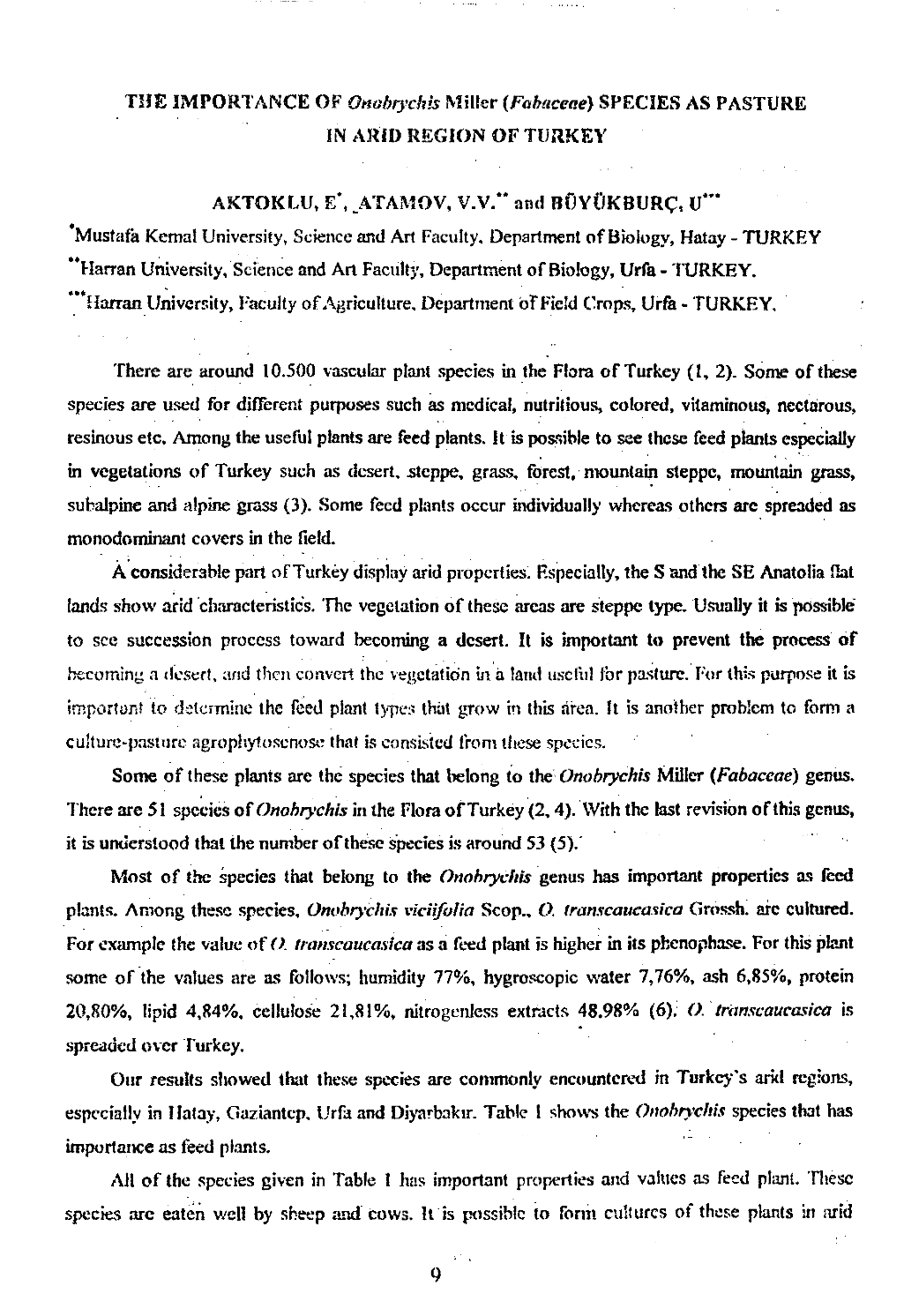

THE IMPORTANCE OF
Onobrychis
Miller
(Fabuceae)
SPECIES AS PASTURE
IN ARID REGION OF TURKEY
AKTOKUJ, E \ _ATAMOV, V . V a n d
b
O
y
OKBURC,
V
м
*Mustafa Kemal University, Science anti Art Faculty, Department o f Biology, Hatay - TURKEY
**Harran University, Science and Art Faculty, Department o f Biology, Urfa - TURKEY.
***Harran University, faculty o f Agriculture. Department o f Field O ops, Urfa - TURKEY,
There are around 10.500 vascular plant species in the Flora o f Turkey (I, 2). Some o f these
species are used for different purposes such as medical, nutritious, colored, vitaminous, nectarous,
resinous etc. Among the useful plants are feed plants. It is possible to see these feed plants especially
in vegetations o f Turkey such as desert, steppe, grass, forest, mountain steppe, mountain grass,
subalpine and alpine grass (3). Some feed plants occur individually whereas others arc spreaded as
monodominant covers in the field.
A considerable part o f Turkey display arid properties. Especially, the S and the SE Anatolia fiat
lands show arid characteristics. The vegetation o f these areas are steppe type. Usually it is possible
to see succession process toward becoming a desert. It is important to prevent the process o f
becoming a desert, and then convert the vegetation in a land useful for pasture. For this purpose it is
important to determine the feed piant types that grow in this area. It is another problem to form a
culture-pasture agrophytosenose that is consisted from these species.
Some o f these plants are the species that belong to the
Onobrychis
Miller (
Fabaceae
) genus.
There are 51 species o f
Onobrychis
in the Flora o f Turkey (2,4). With the last revision o f this genus,
it is understood that the number o f these species is around 53 (5).'
Most o f the species that belong to the
Onobrychis
genus has important properties as feed
plants. Among these species,
Onobrychis viciifoiia
Scop.,
O. transcaucasica
Grossh. arc cultured.
For example the value o f
О transcaucasica
as a feed plant is higher in its phenophase. For this plant
some o f the values are as follows; humidity 77%, hygroscopic water 7,76%, ash 6,85%, protein
20,80%, lipid 4,84%, cellulose 21,81%, nitrogenless extracts 48.98% (6).
O. transcaucasica
is
spreaded over Turkey.
Onr results sliowed that these species are commonly encountered in Turkey's arid regions,
especially in Malay, Gaziantcp. Urfa and Diyarbakir. Table 1 shows the
Onobrychis
species that has
importance as feed plants.
All o f the species given in Table 1 has important properties and values as feed plant. These
species arc eaten well by sheep and cows. It is possible to form cultures of these plants it! arid
9
Научная электронная библиотека ЦНСХБ









